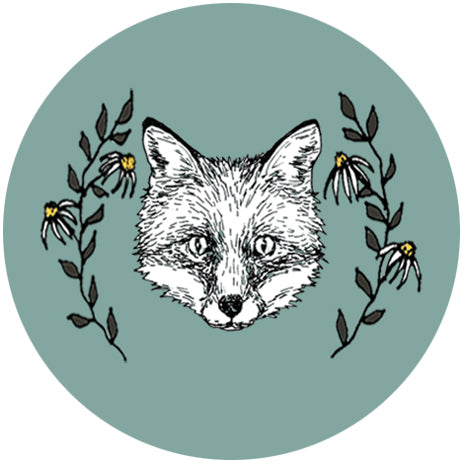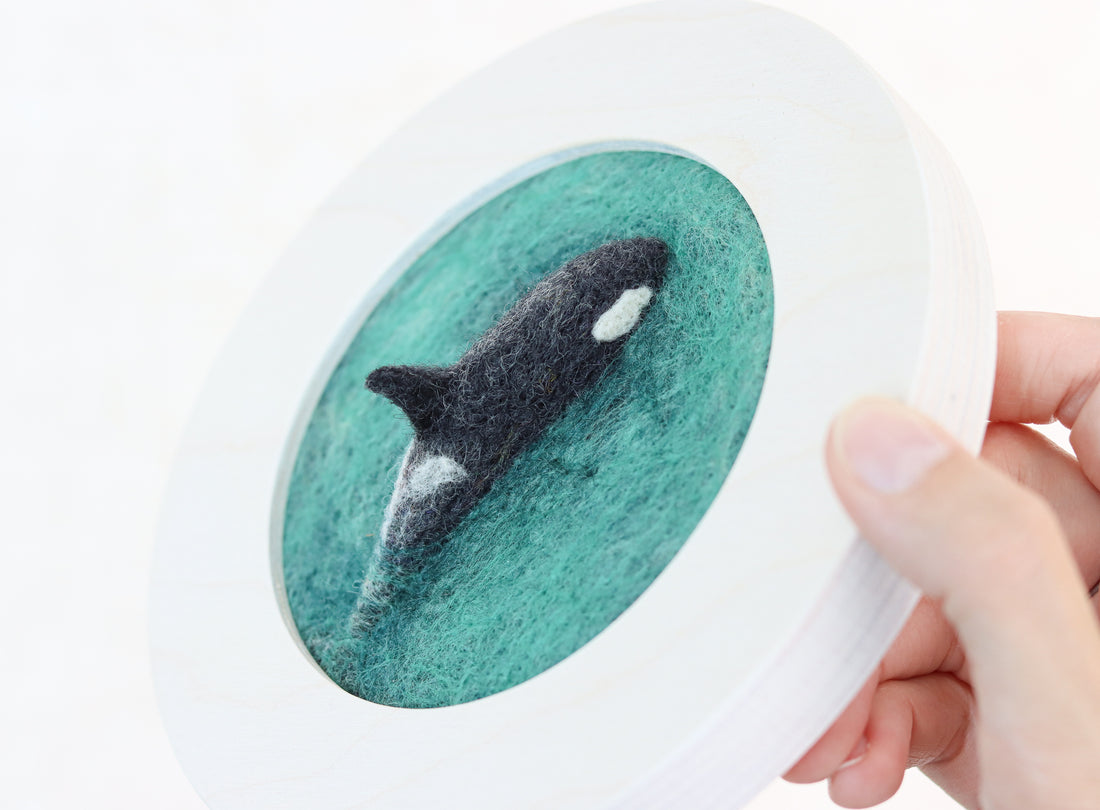One of the most common questions I get when I’m asked what I do in casual conversation or while exhibiting at a craft show is “What is felting?” And usually, since needle felting is what I primarily practice, I’ll go right into how that works. If there is time, I’ll mention wet felting too, but sometimes I forget, or I fear I may overwhelm some folks with too much information. But wet felting and needle felting are both such unique, accessible, and rewarding processes. And interestingly, they use the same materials, yet they can yield either very similar or completely different finished results! So for those of you who are curious, here is a breakdown of the difference between needle felting and wet felting:
Needle Felting is the process of interlocking fibers (usually wool, though other natural fibers can be felted as well) through a repeated stabbing motion with the use of a special barbed needle. The surfaces of wool fibers are covered with tiny, overlapping scales. A felted needle is designed with tiny barbs along the sides of its tapered point. When the felting needle is pushed into the wool, the scales on the wool fibers get caught on the barbs. When this action is repeated, the fibers tangle and mat together, forming felt, and allowing different areas of the wool to be pushed in and sculpted. It is possible to create both flat, two-dimensional pieces of felt (like the sheets of felt you might find at a craft store) and sculptural, three-dimensional pieces, such as an animal. Throughout the process, additional pieces of wool can be added to build bulk, or in smaller amounts for layering effects and small details such as eyes or animal patterns. Here is a piece that incorporates sculptural needle felting (the orca) as well as some flatter, more two-dimensional felting (the water):

Wet Felting is a process that involves soap, water, wool, and the friction and pressure of your hands (or sometimes a textured surface like bubblewrap or a bamboo sushi mat) to create felt. The soap and water act together to lubricate and open up the fibers so that they can more easily catch onto each other and become matted and tangled together. The movement of one’s hands and/or a textured surface against the soapy wet wool creates agitation, helping to push the fibers together. Wet felting can be used to create three-dimensional objects, like these rainbow carrots:

or flatter pieces such as garments or these flowers:

Combining Wet Felting and Needle Felting! It is also possible to use needle felting and wet felting in a single project! These coasters were made using the process of needle felting first, in order to make the circular piece of felt with the tree design. They were then wet felted so make the felted fabric more sturdy and flat, making them better suited for use as a coaster:

I hope you find this information helpful, and if you’re interested in learning either of these processes, please have a look at our workshops. We offer classes for both wet felting and needle felting, for adults and youth!

